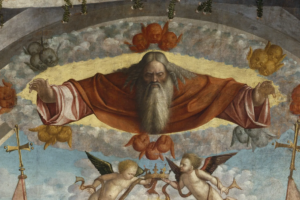Earlier this year, the New York Times Book Review ran a review of GOD An Anatomy by Francesca Stavrakopoulou. Basically this is an examination of anthropomorphic conceptions of deity and the way they were eventually supplanted by the idea of an utterly ineffable, unknowable Divine Presence. One excerpt of the review reads:
“Instead, she believes, we should return to the ancient Israelite mythology. But this is not how religion works. At its best, it demands that, as circumstances change, we respond creatively and innovatively to the present. After the Romans destroyed the Jerusalem temple in A.D. 70, the rabbis rediscovered the divine presence in a highly inventive study of Scripture. The medieval mysticism of the kabbalah depicted the inscrutable divine essence emerging successively in 10 sephiroth (‘stages’), each more perceptible than the last, in, as it were, a divine evolution. Later in the 18th century, Polish Hasidim would develop techniques of concentration that enabled them to become vividly aware of the divine presence, “as though it were flowing all around them and they were sitting in the middle of light” — an experience that made them dance and sing.”
https://www.nytimes.com/2022/01/25/books/review/god-francesca-stavrakopoulou.html.


